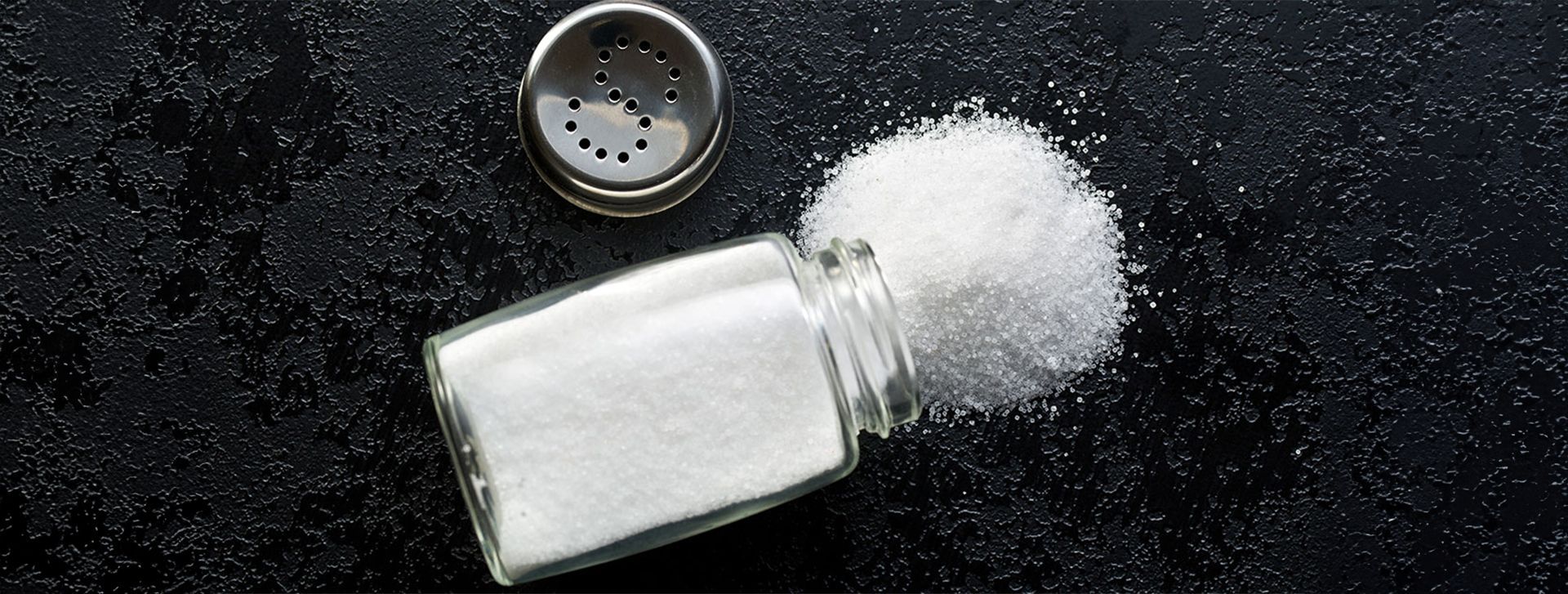5 Ways to Cut Sodium in Your Food – and Still Make It Tasty!
It's all about making smart swaps.

Sodium is a necessary (and tasty!) component of our diets. But exceeding the recommended limit has unsafe implications for blood pressure and kidney health, not to mention your body weight. It’s also notorious for being a cause of water retention.
The recommended maximum daily sodium intake is 2300mg, or one teaspoon of salt.
We are rarely at risk of eating too little, though. From restaurants to food stalls, our meals are prepared with an alarming amount of sodium. Even everyday foods that don’t taste salty are actually hidden salt mines.
Here are five methods for cutting sodium without killing the taste of your food.
1. Avoid sauces and dips
Soy sauce is a staple of many Chinese and local dishes, but just a tablespoon of it conceals more than 1000mg of sodium. Many processed condiments like ketchup, tartar sauce and barbecue sauce aren’t any healthier.
Switching from prepackaged to homemade is the quickest method of reducing your sodium intake.
A food processor can make dips out of almost any food imaginable. In 5 minutes or less, you can create your own salsa, hummus, pesto sauce and countless more – all without the addition of extra sodium.
Tip: Gradually cut down the amount of sauce and dressing you take by asking it to be served on the side. You can immediately reduce your intake this way. Over time, your body will crave less for heavier types of seasonings.
2. Spice up your cooking
We add stock cubes and marinates into our cooking when we worry that the outcome won’t be appetising enough.
Unfortunately, these additives are sodium bombs. A stock cube can release up to 1000mg of sodium into your cooking!
Instead of relying on stock, choose the right combination of spices and herbs that make your dishes come alive. Cumin, star anise and lemon juice can introduce flavour into your food and taste much fresher hands-down.
Your recipes may take a more time to research and experiment with, but it is worth the effort – for less sodium and more tastiness.
Tip: Spices like chillies, ginger and cinnamon all make exciting additions to your cooking. They are also thermogenic foods that yields short-term benefits for your metabolism.
3. Go nuts
We snack on chips and crackers because we enjoy the crunch. Apart from low-fat rice crackers, lightly salted nuts are a healthy and equally crunchy substitute. They are also generous sources of omega-3 fatty acids, which contribute to many bodily functions including your cardiovascular health.
Include half a palmful of nuts in your daily mix of cereals or as toppings for your omelette. It may give the instant boost of flavour and texture that you are missing. But make sure you consume them in moderation!
Tip: Keep little snack packs around you. You won’t feel as tempted to head down to the vending machine.
4. Swap salt out for oils
Oil is often said to be an enemy of a healthy diet, but that is only true when you use it for deep-frying.
Otherwise, it has a whole range of benefits. Olive oil helps maintain cholesterol levels, avocado oil has vitamin E, pumpkin seed oil has omega-3 and 6, and all nut oils are low in saturated fats.
Many specialty oils make fantastic seasonings too: Avocado oil pairs well with shrimp salad, and truffle oil can be drizzled on meats and vegetables. Pumpkin seed oil is a more exciting version of olive oil that can be whisked into vinaigrettes. The possibilities are limitless!
Tip: If you like browsing through specialty stores, or take vacations to other parts of the world, look out for otherworldly additions for your recipes. Experimenting with unfamiliar cuisines may also provide you with fresh ideas.
5. Try meatless Mondays
Many meats require intensive seasoning to taste good, which is particularly true for poor-quality cuts and discount pieces. Even lower-calorie lean meats like turkey ham aren’t necessarily more nutritious.
To manage your meat intake, you may want to go meatless a few days a week.
Avoid canned soups and vegetables though. A harmless-looking can of vegetable soup that can hide up to 890mg of sodium in just half a cup of serving.
Tip: If you are not too keen on going vegetarian, prepare homemade fillets of fish (such as cod, salmon or pomfret) without adding salt. Most protein sources have naturally occurring sodium in them.
Relying less on sodium
The trick to weaning yourself off sodium is to discover more delicious substitutes. People assume that more sodium generates more flavour, but immoderate use of salt often makes food barely edible.
Using some small habits to change your taste buds’ craving for salt, you can upgrade your palette and introduce it to nutritious food that are just as tasty.
To sustain these habits, it is important to be excited about the changes you are making to your diet. Invest some time in looking up delicious recipes and experimenting with the options in your kitchen.
About Absolute Wellness
If you are looking for a safe, fast, yet natural long-term solution for your metabolism and weight loss, consider joining our signature CSH therapy® program at Absolute Wellness. Using a TCM approach, CSH therapy® is a three-step program which involves cupping therapy, scraping therapy and heat therapy. Since 2002, we've helped thousands of clients reduce sodium intake and reach their ideal weight, with a success rate of 99 percent.
Take the first step and
book a consultation today, or read more about what our
CSH therapy®
program is about.



